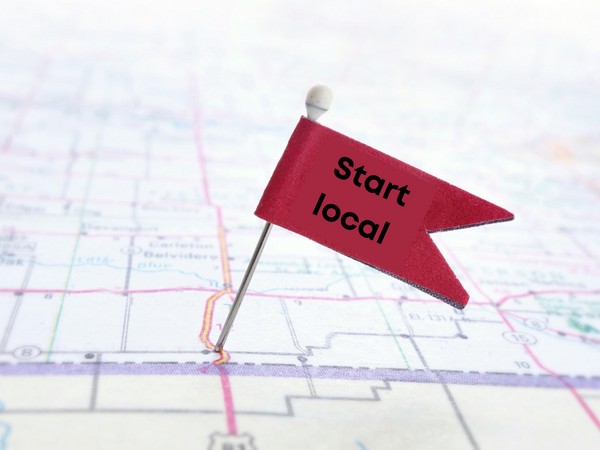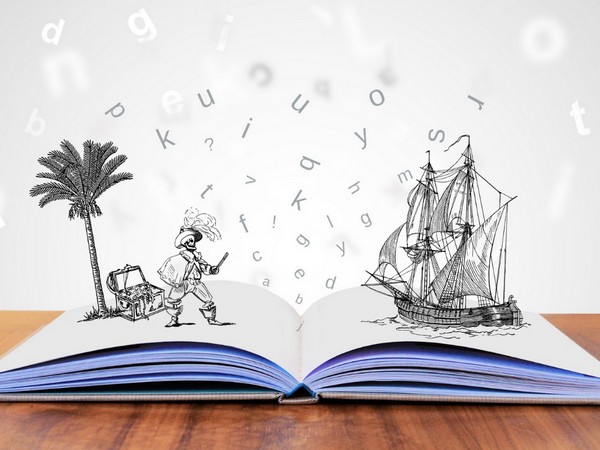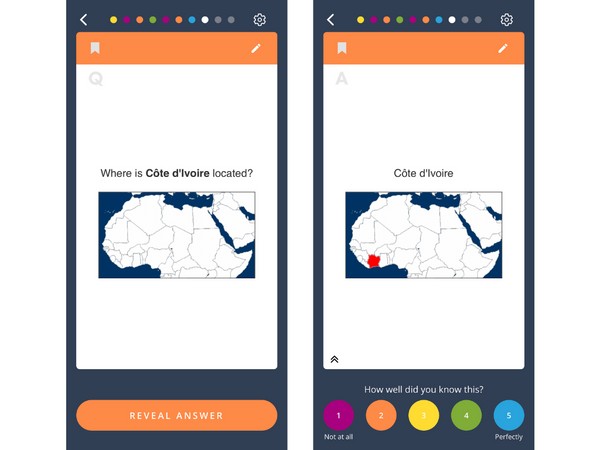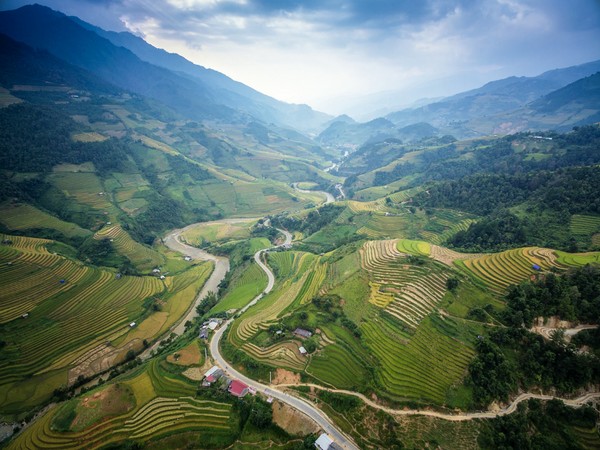Learning geography can seem like a monumental task, but it’s an exciting journey to understanding our world! LEARNS.EDU.VN is here to guide you on How To Learn Geography, transforming it from a daunting subject into an engaging exploration. With effective study techniques and a dash of curiosity, mastering geography becomes an achievable goal. Explore global awareness, geographical concepts, and spatial reasoning, and unlock the world through geography education with us.
1. Grasping the Global Overview of Planet Earth
Kick off your geography quest by taking a bird’s-eye view of our planet. Imagine soaring 350 miles above, witnessing the grand spectacle of continents, oceans, islands, and seas. This panoramic perspective is your launchpad for geography mastery.
Many can pinpoint Asia, Africa, the Americas, Australia, Europe, and Antarctica, along with the Pacific, Atlantic, and Indian Oceans. But can you identify the Red Sea, the Southern Ocean, Madagascar, or Papua New Guinea?
Conquering the names of the globe’s major landmasses and oceans, including seas, islands, and significant lakes, marks a monumental step. These landmarks will anchor your detailed explorations as you progress, offering a solid base for understanding geographical relationships and distributions.
Pop quiz! What makes Antarctica a continent, unlike the Arctic?
2. Rooted Locally, Branching Outwards Geographically
Once you’ve grasped the planet’s layout, narrow your focus to your country or state. Your home turf provides the richest context and relevance, priming your brain to absorb information. This approach leverages familiarity to build a strong foundation in geography.
You might know your city’s streets, but can you name the surrounding mountains and rivers? Do you know your country’s capital and key industries? Or the capitals of neighboring countries? How about your region’s symbolic animal, bird, fish, and tree?
Challenge yourself to master your local geography before venturing further. Starting with the familiar accelerates learning, thanks to the existing context and personal relevance. This approach makes learning geography more accessible and engaging.
Pop quiz! What’s Canada’s national animal?
3. Fueling Your Geographic Education with Curiosity
If your geography journey is for general knowledge, let your curiosity be your compass. Geography is vast, with countless avenues to explore, making it easy to feel overwhelmed. Embrace your interests to stay motivated and focused.
After establishing a global overview and understanding your local geography, indulge your curiosity. This approach transforms learning geography from a chore into an enjoyable exploration.
Consider these avenues:
- What countries or cities captivate you? Planning a safari in South Africa? Research its reserves, nearby cities, wildlife, tribal history, currency, and costs.
- Where have you traveled? Relive your Thailand trip by locating visited cities, exploring provinces, neighboring countries, and bodies of water. Recall national dishes and the flag.
- Where’s your next destination? Preparing for Hawaii? Learn about its islands, mountains, rivers, history, people, agriculture, and local cuisine.
- What sparks your interest? History buffs can delve into a country’s political, social, and economic history, while nature lovers can explore topography, wildlife, and vegetation.
Let curiosity guide your geography studies to stay engaged. Learning about topics that naturally interest you is far more effective than forcing yourself to memorize less appealing facts.
If you’re studying geography for academic purposes, discipline is key. Enhance your study skills with resources like ‘How to study effectively: The ultimate guide,’ to excel in your geography exams.
Pop quiz! What body of water borders Thailand to the south and east?
4. Guiding Your Geographic Education with News and World Events
Rote memorization can make learning geography tedious. Instead, use global news to spark curiosity and explore new areas. This method transforms learning into an active and engaging process.
For example, the Beirut explosion in Lebanon. What did you know about Lebanon beforehand? Could you locate it? What’s Beirut like? What’s the main religion? What countries border Lebanon?
Or Hurricane Maria in Puerto Rico. Where is it, what’s its capital, and what are its neighboring islands?
Then, the Beijing Olympics. Where is Beijing in China, and in what province? What are China’s other provinces, cities, mountains, and bodies of water?
Using current events and news headlines makes learning geography relevant and dynamic. Reinforce your learning by using flashcards in Brainscape to review facts at optimal intervals.
Pop quiz: What’s the highest mountain in China?
5. Leveraging Maps and Visuals in Geographic Education
Visualization is a powerful technique used by successful people. It’s an excellent tool in how to learn geography. Visualizing geography creates stronger memory connections than simply reading text.
When studying U.S. geography, use a map to see the states’ distribution and size. For the Amazon, study maps of its rivers and tributaries, along with photographs. For Russia, explore its landscapes, people, and culture through maps and images.
Visual cues make learning engaging and help your brain retain facts longer. This method utilizes the brain’s natural ability to remember images more effectively than text.
Pop quiz: What are Russia’s three most populous cities?
6. Solidifying Knowledge Through Geography Flashcards
Brainscape simplifies content-heavy subjects like African geography into bite-sized flashcards, presenting facts as question-and-answer pairs. For all learners, drilling facts is essential for retention. Brainscape’s adaptive flashcards are the best tool for this, using a sophisticated spaced repetition algorithm.
Flashcards utilize how your brain naturally remembers information, making learning more efficient. You can create personalized geography flashcards or explore Brainscape’s pre-made collection, accessible on any device.
For essential geography facts to win your next quiz, check out our Knowledge Rehab collection!
7. Embracing Technology in Geography Education
In today’s digital age, technology offers many resources to enhance your geography learning experience. Here’s a rundown of tools and platforms that can make learning geography more engaging and effective:
| Technology | Description | Benefits | Examples |
|---|---|---|---|
| Interactive Maps | Online maps that allow users to zoom in on specific regions, explore terrains, and view geographical features. | Enhances spatial awareness, provides detailed visual information, and offers an engaging way to explore different parts of the world. | Google Maps, National Geographic MapMaker Interactive |
| Virtual Tours | Platforms that offer virtual tours of landmarks and regions, providing a realistic experience of different environments. | Allows exploration of remote locations, enhances understanding of cultural and environmental contexts, and provides immersive learning. | Google Earth VR, YouVisit |
| Educational Apps | Mobile applications designed to teach geography through quizzes, games, and interactive lessons. | Offers a fun and accessible way to learn geography, reinforces knowledge through repetition, and provides immediate feedback. | StackMap, GeoBee Challenge |
| Geographic Information Systems (GIS) | Software that allows users to analyze and visualize geographic data, creating maps and models to understand spatial relationships. | Provides advanced tools for analyzing geographic patterns, supports research and planning, and helps develop critical thinking skills. | Esri ArcGIS, QGIS |
| Online Courses | Structured learning programs that cover various aspects of geography, from physical geography to human geography. | Offers comprehensive instruction, provides structured learning paths, and allows for self-paced study. | Coursera (e.g., “Our Earth: Its Climate, History, and Processes”), edX |
| Augmented Reality (AR) | Apps that overlay digital information onto the real world, providing interactive and immersive learning experiences. | Enhances engagement, allows users to visualize geographic concepts in their environment, and provides a hands-on learning experience. | AR apps that display continents, countries, and landmarks when pointing a device at a globe or map. |
| YouTube Channels | Channels dedicated to geography education, offering documentaries, lectures, and informative videos on various topics. | Provides visual learning, offers diverse perspectives, and allows for flexible learning schedules. | National Geographic, Geography Now |
| Podcasts | Audio programs that discuss geographic topics, offering a convenient way to learn while commuting or doing other activities. | Provides a convenient learning format, offers in-depth discussions, and allows for learning on the go. | The Geography of Everything, Over the Map |
| Social Media | Platforms like Twitter and Instagram, where educators and enthusiasts share geographic facts, images, and news. | Provides real-time updates, offers a platform for discussion, and allows for quick access to information. | Following geography-related hashtags and accounts. |
| Virtual Field Trips | Organized virtual excursions to different geographic locations, led by experts and educators. | Offers an immersive learning experience, provides access to remote locations, and allows for interactive participation. | Discovery Education Virtual Field Trips, The Nature Conservancy Virtual Field Trips |







By integrating these technologies into your study routine, you can transform geography from a subject of rote memorization into an exciting and interactive exploration of our world.
8. Utilizing Effective Strategies in Geography Education
| Strategy | Description | Benefits | Resources |
|---|---|---|---|
| Spaced Repetition | Reviewing material at increasing intervals, reinforcing memory over time. | Enhances long-term retention, optimizes study time, and reduces forgetting. | Anki, SuperMemo |
| Mnemonic Devices | Using acronyms, rhymes, or images to remember facts and concepts. | Simplifies complex information, improves recall, and makes learning more engaging. | “Never Eat Shredded Wheat” (North, East, South, West) |
| Active Recall | Testing yourself regularly to retrieve information from memory, rather than passively rereading notes. | Strengthens memory, identifies knowledge gaps, and promotes deeper understanding. | Flashcards, quizzes, self-testing |
| Concept Mapping | Visually organizing information by creating diagrams that show relationships between concepts. | Enhances understanding of complex topics, promotes critical thinking, and improves information retention. | MindMeister, Coggle |
| Case Studies | Analyzing real-world examples and scenarios to apply geographic knowledge. | Provides practical application of concepts, enhances problem-solving skills, and promotes critical thinking. | Analyzing the impact of deforestation on the Amazon rainforest, studying urbanization patterns in major cities |
| Collaborative Learning | Studying with peers, discussing concepts, and teaching each other. | Enhances understanding through different perspectives, improves communication skills, and fosters a supportive learning environment. | Study groups, online forums |
| Gamification | Incorporating game elements such as points, rewards, and challenges into the learning process. | Increases motivation, makes learning more fun, and provides immediate feedback. | Geography-based trivia games, educational apps with reward systems |
| Interdisciplinary Approach | Connecting geography with other subjects like history, science, and culture. | Provides a holistic understanding, enhances critical thinking, and makes learning more relevant. | Studying the relationship between climate change and migration patterns, analyzing the historical significance of trade routes |
| Fieldwork | Conducting on-site investigations and observations in geographic locations (can be virtual). | Provides hands-on experience, enhances observation skills, and promotes deeper understanding of geographic processes. | Visiting local parks, museums, or participating in virtual field trips |
| Mindfulness and Focus | Practicing techniques to improve concentration and reduce distractions during study sessions. | Enhances focus, improves memory, and reduces stress. | Meditation, deep breathing exercises |
By integrating these effective strategies into your geography study routine, you can create a more engaging, efficient, and enjoyable learning experience.
9. Keeping Up-to-Date with the Latest Trends in Geography Education
To ensure you’re equipped with the most relevant and effective methods for learning geography, it’s essential to stay informed about the latest trends in geography education. Here’s a summary of what’s current:
| Trend | Description | Benefits | Examples |
|---|---|---|---|
| Geospatial Technology Integration | Incorporating tools like GIS, remote sensing, and GPS into the curriculum to enhance spatial analysis and problem-solving skills. | Provides hands-on experience with industry-standard tools, enhances analytical skills, and prepares students for careers in geospatial fields. | Using GIS software to map and analyze urban development, employing remote sensing data to study deforestation patterns |
| Sustainability and Environmental Geography | Focusing on the relationship between humans and the environment, emphasizing sustainable practices and addressing environmental challenges. | Promotes environmental awareness, encourages responsible citizenship, and fosters critical thinking about global issues. | Studying the impact of climate change on coastal communities, analyzing the effectiveness of renewable energy sources |
| Global Citizenship Education | Emphasizing the interconnectedness of the world, promoting cultural understanding, and encouraging active participation in global issues. | Develops empathy, enhances intercultural communication skills, and prepares students to be informed and engaged global citizens. | Participating in international exchange programs, studying global migration patterns, analyzing the impact of globalization on local economies |
| Inquiry-Based Learning | Encouraging students to ask questions, investigate topics, and construct their own understanding through exploration and research. | Enhances critical thinking, promotes independent learning, and fosters a deeper understanding of geographic concepts. | Conducting research projects on local environmental issues, designing solutions to urban planning challenges |
| Place-Based Education | Connecting learning to the local environment, using local resources and experiences to teach geographic concepts. | Enhances engagement, promotes community involvement, and makes learning more relevant and meaningful. | Studying local ecosystems, conducting historical research on local landmarks, analyzing the economic impact of local industries |
| Virtual and Augmented Reality | Utilizing immersive technologies to create virtual field trips and interactive learning experiences. | Provides access to remote locations, enhances engagement, and allows for hands-on exploration of geographic environments. | Taking a virtual tour of the Amazon rainforest, using AR apps to explore the layers of the Earth’s atmosphere |
| Data Visualization | Teaching students how to create and interpret maps, charts, and graphs to analyze and communicate geographic data. | Enhances analytical skills, promotes effective communication, and prepares students to make data-driven decisions. | Creating thematic maps to visualize population density, analyzing climate data to predict future trends |
| Interdisciplinary Projects | Integrating geography with other subjects like history, science, and math to provide a holistic understanding of complex issues. | Enhances critical thinking, promotes collaboration, and makes learning more relevant and engaging. | Studying the history of trade routes, analyzing the scientific principles behind climate patterns, using mathematical models to predict population growth |
| Focus on Critical Thinking | Encouraging students to analyze information, evaluate sources, and form their own opinions on geographic issues. | Develops analytical skills, promotes independent thinking, and prepares students to make informed decisions. | Analyzing the causes and consequences of deforestation, evaluating the effectiveness of different approaches to urban planning |
| Personalized Learning | Tailoring instruction to meet the individual needs and interests of each student. | Enhances engagement, promotes self-directed learning, and maximizes learning outcomes. | Allowing students to choose research topics based on their interests, providing differentiated instruction based on learning styles |
By staying informed about these trends, educators and learners can adapt their approaches to geography education, ensuring that they are using the most effective and engaging methods available.
10. Frequently Asked Questions (FAQ) on How to Learn Geography
- Q1: What is the best way to start learning geography as a beginner?
- A1: Begin with a broad overview of the world’s continents, oceans, and major countries. Focus on understanding basic map reading skills and geographical terms.
- Q2: How can I improve my memory of geographical locations?
- A2: Use mnemonic devices, flashcards, and spaced repetition techniques. Associate locations with interesting facts or stories to make them more memorable.
- Q3: What are some effective tools for learning geography online?
- A3: Explore interactive maps like Google Earth, educational apps, and online courses on platforms like Coursera or edX.
- Q4: How can I make learning geography more engaging and less like rote memorization?
- A4: Connect geography to current events, personal interests, and travel experiences. Use virtual tours, documentaries, and real-world case studies.
- Q5: What is the role of technology in modern geography education?
- A5: Technology enhances learning through GIS, virtual reality, and interactive simulations, providing immersive and hands-on experiences.
- Q6: How can I integrate geography into my daily life?
- A6: Follow news stories with a geographical perspective, plan virtual or real trips, and explore the history and culture of different regions.
- Q7: What are some key concepts in physical geography that I should focus on?
- A7: Focus on climate patterns, landforms, ecosystems, and natural processes such as plate tectonics and erosion.
- Q8: How can I stay updated with the latest geographical changes and discoveries?
- A8: Follow reputable geography-related accounts on social media, subscribe to geography journals, and stay informed about current events.
- Q9: How can I use geography to enhance my understanding of global issues?
- A9: Analyze how geography impacts issues like climate change, migration, resource distribution, and political conflicts.
- Q10: What are some good resources for advanced learners of geography?
- A10: Explore academic journals, advanced GIS software, and participate in research projects or fieldwork opportunities.
A Final Word on Geography Education
These principles provide a roadmap for your geography learning journey:
- Begin with a world overview
- Start locally, expand outwards
- Follow your curiosity
- Use news to guide study
- Visualize with maps and images
- Reinforce with flashcards
Happy exploring! Let these tools help you master geography. LEARNS.EDU.VN is your partner in lifelong learning, offering resources and support to explore the world. Contact us at 123 Education Way, Learnville, CA 90210, United States, Whatsapp: +1 555-555-1212, or visit our website LEARNS.EDU.VN to begin your journey.
Ready to take your geography knowledge to the next level? Visit LEARNS.EDU.VN today to discover more resources and courses tailored to your learning needs! Whether you’re looking for in-depth articles, interactive quizzes, or expert-led courses, learns.edu.vn has everything you need to expand your geographical expertise.
Pop quiz answers:
Why does Antarctica qualify as a continent but the Arctic doesn’t? — Antarctica has solid rock beneath its ice and snow. The Arctic is only ice.
What’s the national animal of Canada (eh?) — The beaver!
What body of water borders Thailand to the south and east? — The South China Sea (the Gulf of Thailand is an inlet).
What’s the tallest mountain in China? Mount Everest!
What are the three most populous cities in Russia? (1) Moscow, (2) Saint Petersburg, and (3) Novosibirsk

